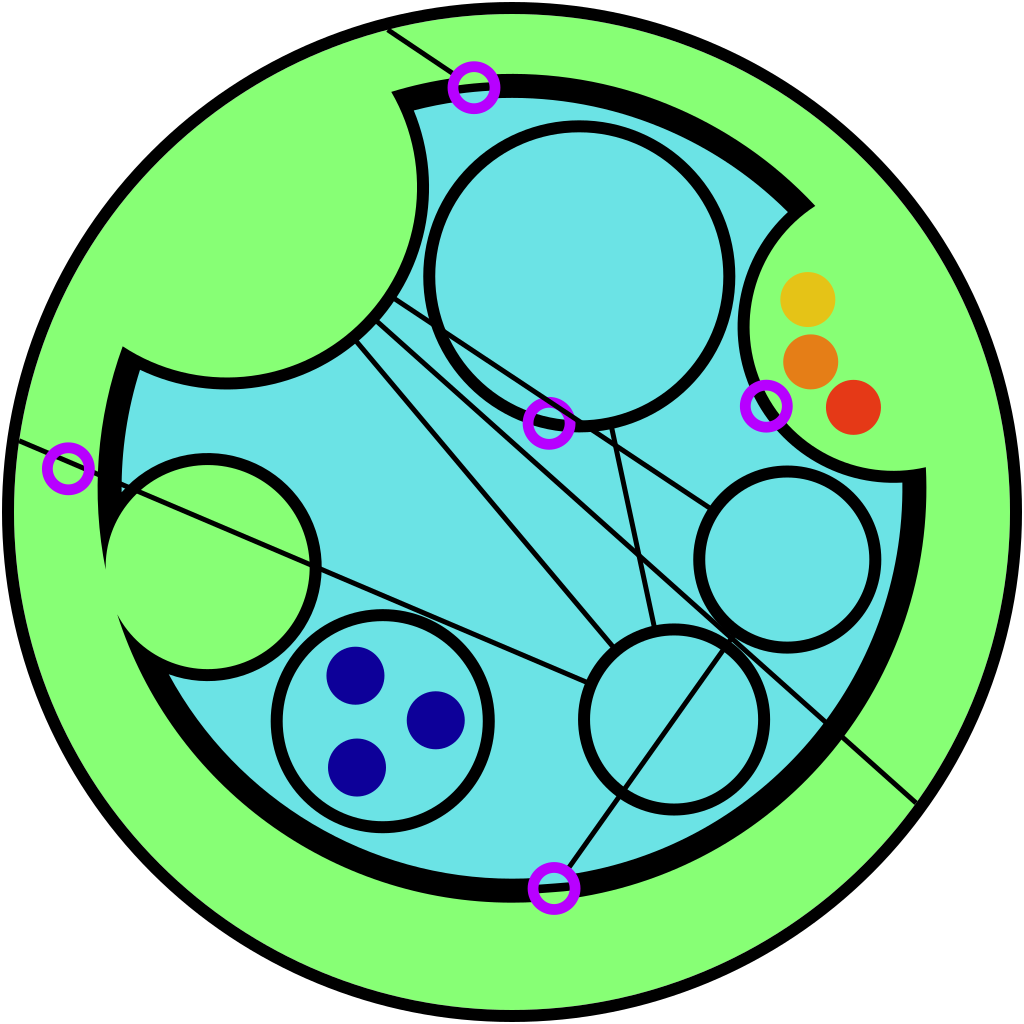I think I understand how the battery where they drop a big weight down a mountain works; how do these work? Or how does it compare in effectiveness as I assume it’s probably the same principle?
It has a turbine inside it. It is not a cement ball, it is very misleading title. It’s a cement shaped hollow orb with a hydro power generator inside it.
Well that sounds like cheating.
They’re going to…pull a vacuum in a concrete sphere deep underwater. And then use the force of water being sucked back in to turn a turbine.
…sure.
Wow, someone invented upside down pumped storage.
Oh I’m sure some rich bastards will find a way to ruin it.
I’m pretty skeptical about this- wouldn’t a 30m sphere be incredibly buoyant when empty? I get its concrete, but it’s displacing huge amounts of water. So you’d need some massive anchoring, maybe that’s not a big deal. Second, I don’t know what depths we’re talking about here, but I feel like the stress from cycling these things daily would be insane- in high pressure salt water no less. I also wonder what the efficiency of this system would be compared to other similar batteries, like pumped hydro storage. It seems to me pumping out water to near vacuum while under crushing outside water pressure would be a significant power hog.
The most pressure it would experience would be the difference in internal vs external pressure. At 1000ft of depth there’s a pressure of 440psi. Assuming the sphere somehow managed a perfect vacuum that’s still well below the 6000psi compressive strength of high strength concrete, hell they would still have more flexural strength. The spheres themselves definitely wouldn’t be the weak link.
It seems to me pumping out water to near vacuum while under crushing outside water pressure would be a significant power hog
Well, yeah. That’s the point. It’s a battery. Whatever energy you put in to pump the water out, you get some percentage (probably in the 50-70% range) of it back when you let the water back in. The point of these is to store energy from renewables whenever they are providing more power than the grid demands - otherwise the power would be wasted.
Edit: The paper claims 72% efficiency which is pretty good if I understand things correctly
I don’t know what depths we’re talking about here,
From the article:
The idea is relatively simple: hollow concrete spheres are installed at a depth of several hundred metres.
Thanks, I missed that on my read through - 1000 feet of water is pretty serious pressure.
The more pressure the more “equivalent head” power discharge potential. Separate “vacuum pump” (instead of bidirectional) could also have several stages to improve efficiency.
High social acceptability: Installed far from inhabited areas, these facilities arouse less opposition.
Actually, being very close to inhabited areas, but 0 impact, including nonsensical nuissance arguments, means short power transmission. It’s also very easy to pair with offshore wind.
I would like to know what is the % of loss when storing power as any energy conversion is not lossless.
Cheap storage is more important than conversion ratio. Enough renewables leads to periods of negative prices without matching storage capacity. Storage can mean 1-2c/kwh charging costs, and even 50% efficiency makes discharged power 2-4c/kwh.
if 0.5m thick sphere, 30m diameter is 1413 m^3 of concrete. $300k to $400k in materials. Stores 150mwh power. About $2-$3/kwh
… a sphere nine metres in diameter and weighing 400 tonnes will be submerged off the coast of California at a depth of 500 to 600 metres. It will have a storage capacity of 0.4 megawatt hours (400 kWh) …
i will try a rough calculations : suppose we can have concrete at $100 per ton, then it’s a minimum investment of $40,000. Also suppose electricity is stored with a large added value of 10 cents per kilowatt hour, so, for every cycle a rough gain of $40. By these numbers, 1,000 cycles would pay for the concrete … so, it may look good considering they plan a life of about 50 years for such devices.
On the other hand if competitive battery storage cost only one cents per kilowatt hour (temporary in and out storage) and if concrete and fabrication goes up 10 times to $1,000 per ton then it is not economically viable anymore.A good calculation of profitability would need to take into account the less than 100% energy efficiency of batteries cycling and of hydraulic energy cycling, … and so many more parameters which have to be studied.
They describe these as giant concrete spheres, but there are (obviously) pumps and turbines involved too, and that those are aimed at a 20-year partial part-replacement lifespan. There’s no indication as to how much these pumps/turbines will cost but I’m gonna guess probably more than the cost of the concrete since it’s relatively cheap in comparison, and that’s before you consider that the major wearing components (which is to say, the expensive stuff) will have to be replaced twice within the intended lifespan. And that’s not accounting for things that break and need to be replaced, inside of a giant concrete sphere on the bottom of the ocean where maintenance will be absurdly expensive. Needless to say I’m pretty skeptical of the economic viability of this project. I’d be happy to be proven wrong, but I’m not holding my breath.
i agree with all of this except, you know, when they will have to do maintenance … i guess they will be (they would be) more simply hauling the whole thing out to work at the surface of the sea … in this scenario the mechanical components would be at the top of the sphere and out of the water.
Yeah, so instead of sending down divers with equipment you’re hauling hundreds of tons of concrete out of the sea, which means aside from a ship and crew which you’d need anyway you’re still going to need specialized equipment (some big honkin’ chains and winches at a minimum) and tools and such, and that stuff isn’t cheap either. Also they’re aiming at a 20 year partial replacement cycle for parts that are going to be submerged in or otherwise exposed to sea water which is notoriously corrosive, some of which will be at fairly high pressure (otherwise the turbines will be less efficient), that seems optimistic at best, even if nothing breaks before the scheduled replacement time, and you certainly can’t count on that.
Yeah, so instead of sending down divers with equipment you’re hauling hundreds of tons of concrete out of the sea, which means aside from a ship and crew which you’d need anyway you’re still going to need specialized equipment (some big honkin’ chains and winches at a minimum) and tools and such, and that stuff isn’t cheap either.
You need specialized equipment also if you send down people to do the job that deep. And given you need to use many more specialized people (not everyone can work at these depths and they are not cheap) with all the associated support infrastructures like decompression chanbers and so on. I doubt that the cost will be lower that simply hauling the whole thing out of water.
My point is that whether you send down divers or haul 400+ tons of concrete and equipment up from the bottom of the ocean, it’s going to be expensive to maintain either way, especially if things don’t go according to plan and they have to perform maintenance more than once every 20 years or whatever.
And my point is that, given how deep these things seems to be, it is cheaper to haul them on the surface than sending a diver down, even if you need to do some unscheduled maintenance, especially because sending down a commercial diver (the only that can hope to work this deep) is not an easy feat in itself.
Obviously it will be expensive either way, I was only pointing out that sending down commercial divers a lot of additional levels of complexity (decompression periods measured in days or weeks, need to hire many more highly specialized people and from a way smaller pool and so on) that will drive up the price.
Did you not catch the part a couple comments ago where I agreed with you? Yeah, of course it’s cheaper to not send divers down. All I’m saying is cheaper cheaper doesn’t mean cheap. And my larger point is that it’s probably not cheap enough, not least because they’re planning for a 20 year part replacement cycle on metal bits exposed to high-pressure seawater and that just doesn’t seem plausible to me.
Why not submerge a tank with a hole at the bottom and blow air in the tank via a hose to store energy?
The adiabatic compression of gas makes this highly inefficient.
Each sphere has an estimated lifespan of between 50 and 60 years, with partial replacement of components every 20 years or so.
The concept is fascinating, but what I’m most curious about is how they achieve that longevity in seawater. Benthic life really loves to settle and build on hard surfaces.
Every time I see these “We’ll do X in/around the ocean” projects I think, “These people have not spent a lot of time near the ocean.”
There are 2000 year old Roman concrete piers that are still just hanging out in sea water. So it’s possible if you find the right mix.
The concrete isn’t the problem. Like mentioned above, the sealife growth is. Also, metal and moving mechanicals are savaged by seawater (and the sealife growth). Keeping things working on the surface of the water is difficult and expensive. Water pressure makes that even worse. Maintenance requires divers which are likewise very expensive.
Really good points. I was only thinking of the structure of the concrete… Sea life growth is a whole other ball game!
I would imagine it wouldn’t matter how many barnacles and stuff are on it. That’s the outside. Everything important is inside, I’m assuming the intake water will be screened or filtered in some way.
Most benthic life (by number) start as tiny, motile creatures. Screens would reduce head pressure and require maintenance. Barnacles of all kinds, as an example critter, settle on everything to which they can adhere. I’m guessing the engineers considered these complications since there have been past power project failures because of sea life. I wish the article went into those mitigations. If it’s somehow a non-issue by nature of the design, my curiosity is even more piqued.
Benthic Life needs to be band/album/movie title.
Unfortunately, you can’t see BENTHIC live.
They don’t have a tour planned.
https://lifeforcerecords.com/archives/artists/benthic/Of course they’re not touring. They’re sessile.
💀
Interesting concept, but not very scalable. It’s basically a reversed dam - when it’s full, there’s 0m head of water. Then with excess energy, you lower the level inside, storing the energy in the water outside. E.g -2m head. Water then flows in to equalise head, and doing so, regenerates electricity. Adding depth to supercharge pressure differentials is a good idea, although I wonder how they limit the flow rate, or otherwise prevent cavitation shocks each cycle.
Could be useful as a private industrial battery, but a dam would still be better on an infrastructural level.
Dams have issues around silt buildup over time and to the best of my understanding the US is already dammed to the max (within reason).
I’m keen to see how it pans out. Seems like a very interesting concept.
Silt did not magically disappear because your dam is spherical, and there is a lot of it on the sea floor. They need to install some kind of filtering system anyway.
Also, the lifetime of a sphere is estimated to be 60 years, while the traditional dam is engineered for 100+ years of service.
The main advantage is that the sea floor is unused and unregulated like the dry land , but then you could as well build an actual scuba diving underwater base with a hydro dam instead of a sphere, it will also be easier to clean and repair, but I guess that would be too much evil moustache twirling to get funded.
Like a battery, it’s not scalable as a one off, but it may be as a modular mass produced item.
Or maybe like a wind turbine. You’d have a field of them comprising a power plant. If you lose some individuals, who cares. If you need to do maintenance you can take one offline or entirely replace it without really impacting the power plants output
An easy manufacturing method would be to 3d print in plastic a double walled shell, with fill holes for concrete, and mounting chanels for motors. Plastic “lining” would provide salt water protection for the concrete.
We have seawater resistant concrete. We don’t need to plastic line it. It’s the turbine that’ll require the most maintenance.
Depends if the spheres require any steel reinforcement; the salt penetrates the concrete and absolutely wrecks rebar. Though I imagine spheres at depth (not to mention with a partial vacuum) can function like an arch and support themselves with compression, which concrete excels at.
Sounds interesting, but considering how thick hydroelectric dams need to be to hold back a mere lake, how thick are these spheres going to be to hold back an entire ocean?
Says on the wiki 2.7 meters thick








